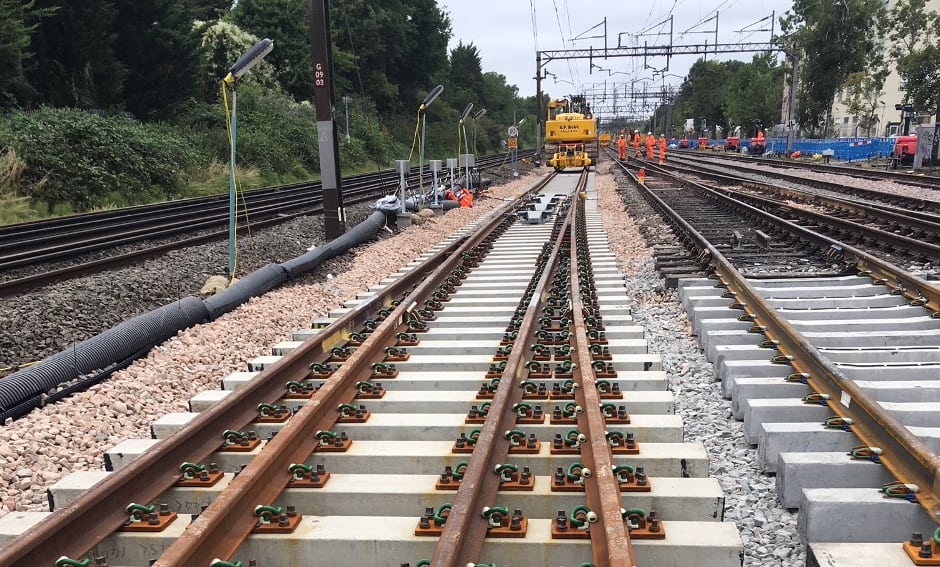
The UK’s rail passengers make 1.7 billion train journeys each year, while 400,000 tonnes of freight are transported over the network every day.
Delays and disruption to the rail network as a result of failures and unplanned maintenance work can have a significant impact on the economy.
Detecting damage to the track in real time, before it is able to propagate, is therefore vitally important to ensure the smooth running of the network.
To this end, researchers at the Universities of Exeter and Birmingham are working with Network Rail on an EPSRC-funded project to develop a self-powered, wide-area track condition monitoring system for the railways.
The system, which will harvest energy from vibration to the rails caused by trains passing along the line, will dramatically improve maintenance efficiencies, and significantly reduce the cost of managing the UK’s railway infrastructure, according to project leader Professor Meiling Zhu, chair of mechanical engineering at Exeter University.
“At the moment, all over the world, countries have vast railway tracks, which people have to be sent out to inspect when there is a problem,” said Zhu. “Alternatively, there are special trains equipped with monitoring technology, but these can only spot problems when they are passing over that particular section of track.”
Sensors embedded into the track itself would allow operators to predict faults forming anywhere on the network before they become a problem, she said.
Since the system will not need mains power or batteries for its energy supply, it will eliminate the cost of cabling and battery replacement, said Zhu.
“If you are powered by the mains, then you need to run a wire to connect with the power line, and every cable adds cost, as well as maintenance issues, so we need to get rid of this wire,” she said. “On the other hand if you introduce a battery, then that battery will have a very limited life, even though the technology has improved recently.”
So instead, the researchers decided to harvest locally available energy to power the system. Since solar energy is not always available, particularly at night and on dark winter days, the team chose to use piezoelectric devices that convert energy from vibrations on the track into electricity, she said.
“Vibration energy has been researched in the UK for more than 10 years now, but it hasn’t yet been specifically tailored for rail track monitoring,” said Zhu. “We will work with Network Rail to understand their specifications and requirements, and develop bespoke energy harvesting-powered wireless communication sensing technology.”
The system will consist of accelerometers, strain gauges, and acoustic emission (AE) sensors, which will measure track deflection, vibration and interactions between the rail and train wheels.
The embedded sensors will be wirelessly connected to an operation and management centre, equipped with automated data processing software designed to detect signs of damage to the track.
Covering an area as vast as a national rail network with a wireless sensor network will be a significant challenge, said Zhu.
“At the moment most people are studying short-range wireless communication sensor networks, which only cover a few hundred metres, but the railway track in many countries is thousands of kilometres long, so the network will need to be able to cover a large area,” she said.
The project partners include three divisions from Network Rail: Track Renewals, based in Birmingham; Infrastructure Projects; and Telecom, based in Milton Keynes. The project also includes Quattro and Swiss Approval.
Once the system is developed, the researchers plan to test its suitability on a stretch of track.










Radio wave weapon knocks out drone swarms
Probably. A radio-controlled drone cannot be completely shielded to RF, else you´d lose the ability to control it. The fibre optical cable removes...